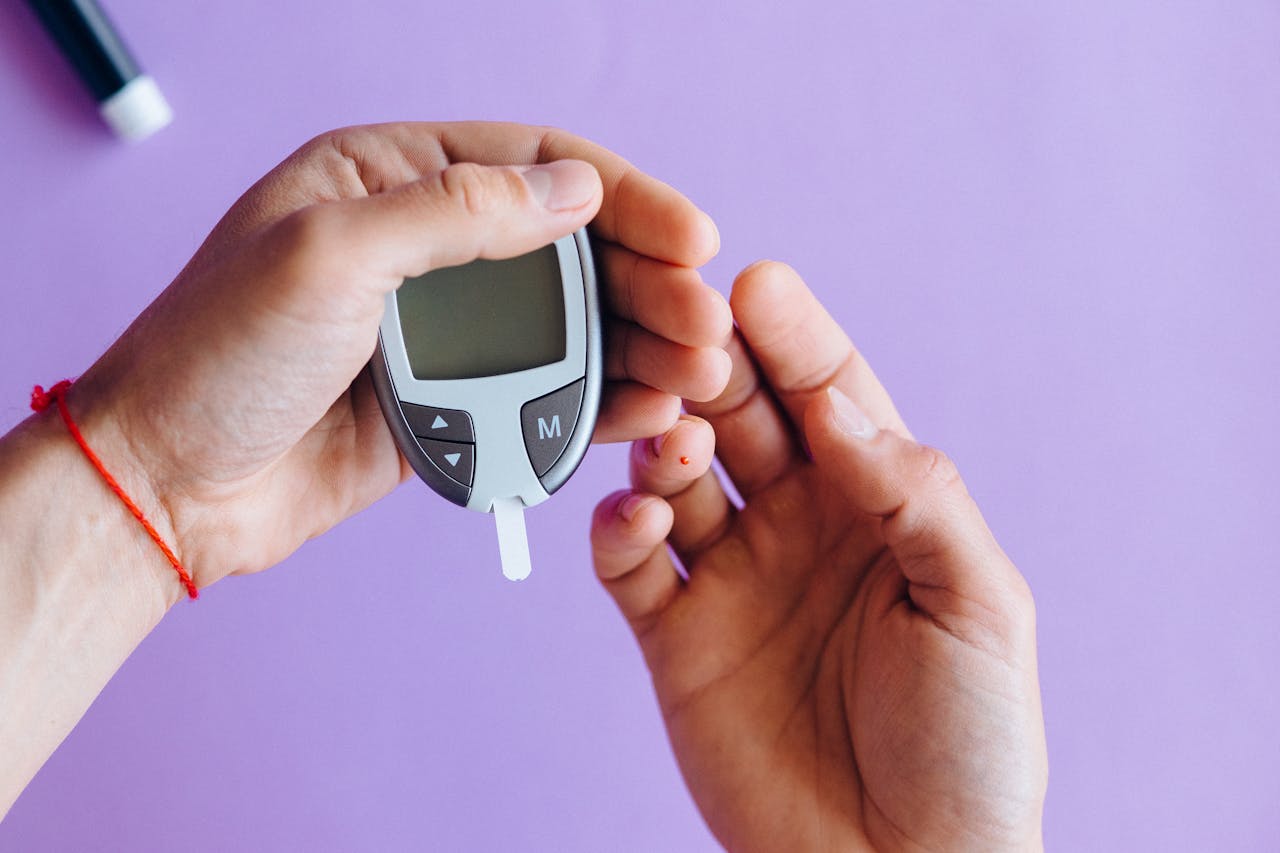Gestational diabetes is a type of diabetes diagnosed for the first time during pregnancy. It affects how your body uses sugar (glucose), leading to higher-than-normal blood sugar levels that can impact both your health and your baby's well-being. While this diagnosis can be concerning, effective management and treatment can help ensure a healthy pregnancy and delivery.
What Is Gestational Diabetes?
Gestational diabetes occurs when hormones produced by the placenta interfere with the action of insulin, the hormone responsible for regulating blood sugar. This "contra-insulin effect" typically begins between 20 and 24 weeks of pregnancy. If your pancreas cannot produce enough insulin to overcome this resistance, blood glucose rises, resulting in gestational diabetes.
Risk Factors
Anyone can develop gestational diabetes, but certain factors increase risk, including:
-
Being overweight or obese
-
Age over 25
-
Family history of diabetes
-
Previous birth of a baby over 9 pounds
-
Belonging to certain ethnic groups (African-American, Hispanic, Native American, Asian, Pacific Islander)
-
Having pre-diabetes or a history of gestational diabetes
Symptoms
Most women with gestational diabetes do not experience noticeable symptoms. In some cases, increased thirst and more frequent urination may occur, but these are common in pregnancy regardless of diabetes.
Diagnosis: The Glucose Test
Screening for gestational diabetes usually happens between 24 and 28 weeks of pregnancy. The process often involves a two-step approach:
-
Glucose Screening Test: You drink a sugary solution, and your blood sugar is checked after one hour. If your blood sugar is above 140 mg/dL, you proceed to the next step.
-
Oral Glucose Tolerance Test (OGTT): After fasting, you drink another glucose solution, and your blood sugar is measured several times over three hours. If two or more readings are above set thresholds, gestational diabetes is diagnosed.
What To Do After a Diagnosis
If you are diagnosed with gestational diabetes, it's important to take action promptly:
-
Meet with your healthcare team: This may include your obstetrician, a diabetes educator, and a registered dietitian.
-
Begin monitoring blood sugar: You’ll likely be asked to check your blood sugar several times a day—fasting and after meals—to ensure it stays within target ranges.
-
Adopt lifestyle changes: Most women can control gestational diabetes with diet and exercise, which are the first-line treatments.
Treatment and Management
Healthy Eating
-
Balanced Meals: Focus on fruits, vegetables, whole grains, lean proteins, and low-fat dairy. Limit refined carbohydrates and sugary foods.
-
Meal Timing: Eat three regular meals and two to three snacks daily to maintain steady blood sugar levels. Avoid skipping meals.
-
Carbohydrate Control: Pay attention to the type and amount of carbohydrates, as they have the most impact on blood sugar.
Physical Activity
-
Regular Exercise: Aim for at least 30 minutes of moderate activity (like walking, swimming, or cycling) most days of the week, with your provider’s approval.
-
Benefits: Exercise helps lower blood sugar, manage weight gain, and reduce pregnancy discomforts.
Blood Sugar Monitoring
-
Targets: For most women, the American Diabetes Association recommends:
-
Fasting: 95 mg/dL or less
-
1 hour after eating: 140 mg/dL or less
-
2 hours after eating: 120 mg/dL or less
-
-
Tracking: Keep a log of your readings to share with your healthcare team.
Medication
-
When Needed: If lifestyle changes are not enough to control blood sugar, insulin injections may be prescribed. Some providers may consider oral medications, but insulin is the standard due to its safety profile in pregnancy.
-
Safety: Insulin does not cross the placenta and is safe for your baby.
Monitoring Your Baby
-
Ultrasounds and Testing: Your provider may recommend additional ultrasounds or tests to monitor your baby’s growth and well-being.
-
Delivery Planning: If blood sugar is not well controlled or the baby is large, your provider may discuss early delivery or a cesarean section.
After Delivery
-
Blood Sugar Returns to Normal: For most women, blood sugar levels return to normal after childbirth.
-
Postpartum Testing: You will need a blood glucose test 6–12 weeks after delivery to ensure your levels are back to normal. Continued yearly screening is recommended, as you have a higher risk of developing type 2 diabetes later in life.
-
Breastfeeding: Encouraged, as it benefits both mother and baby and may help reduce future diabetes risk.
Long-Term Health
Having gestational diabetes increases your risk of type 2 diabetes in the future. Maintaining a healthy lifestyle, regular exercise, and keeping a healthy weight can help reduce this risk. Annual diabetes screening is recommended for women with a history of gestational diabetes.
Key Takeaways
-
Gestational diabetes is a common pregnancy complication, but with proper management, most women have healthy pregnancies and babies.
-
Early detection and prompt action—through diet, exercise, blood sugar monitoring, and, if needed, medication—are essential.
-
Ongoing follow-up after delivery is crucial to monitor for persistent diabetes and prevent future health issues.
If you are diagnosed with gestational diabetes, work closely with your healthcare team to develop a personalized plan that supports both your health and your baby’s well-being.










